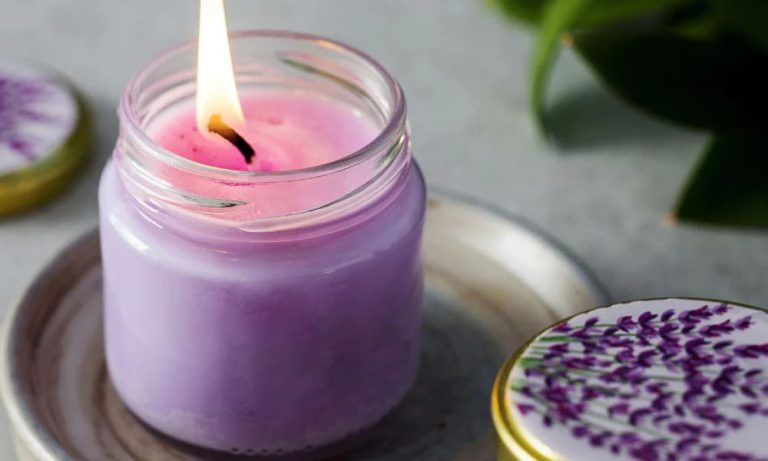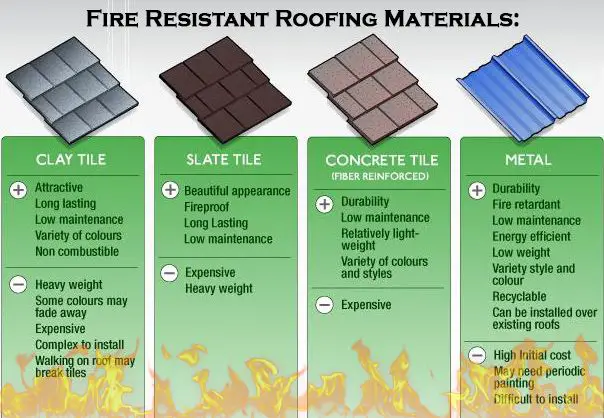How Long Can You Burn A Tea Light Candle?
What is a Tea Light Candle?
A tea light candle is a small candle typically contained in a metal or glass holder. These candles are filled with paraffin, soy, or beeswax fuel and have a short burning time of 2-6 hours.
Tea lights are distinguished from regular candles by their small size and metal containers. The metal cups allow the melted wax to pool at the base as the candle burns down, maximizing the burn time. The metal also helps dissipate heat and contains the flame safely.
Unlike taper candles, tea lights do not require candle holders or stands. Their small size and self-contained design makes them convenient and safe to use. Tea lights are often used for small-scale lighting needs and decorative ambiance.
Typical Tea Light Burn Times
Manufacturers often claim tea lights will burn for 4-6 hours.[1] However, in reality, the average burn time is closer to 3-5 hours. This depends on factors like the size of the candle and wax type used.[2]
Tea lights are small candles, usually 1-2 inches wide and 0.5-1 inch tall. Their compact size means they contain a limited amount of wax and wick compared to larger candles. This restricts how long they can burn before the wax is used up and the flame goes out.
Standard tea lights made from paraffin wax typically burn for 3-4 hours. [3] However, there are varieties made from beeswax or soy wax that may burn slightly longer, around 4-5 hours. Tea lights made specifically for extended burn times could last up to 6 hours.[4] Votive candles, which are slightly larger, may burn for 5-6 hours on average.

So in summary, while some tea lights might burn for the full 4-6 hours claimed, the typical burn time is around 3-5 hours depending on the specific candle. Burn duration can vary quite a bit between brands and candle compositions.
[1] https://www.quora.com/How-long-does-a-tealight-candle-burn
[2] https://goodlightcandles.com/collections/tea-lights
[3] https://www.amazon.com/Tea-Light-Candles-6-7-Hour/dp/B01JZOTG1K
[4] https://goodlightcandles.com/collections/tea-lights
Factors That Affect Burn Time
There are several key factors that impact how long a tea light candle will burn:
Wax Type – The type of wax used can significantly affect burn time. Paraffin wax, a petroleum byproduct, is commonly used in tealights and provides a long burn time. Soy and beeswax are natural waxes that typically burn more quickly than paraffin. Gel tealights made from a mineral oil gel provide very long burn times.
Wick Type and Size – Tealights usually have a single cotton wick. A thicker wick provides more fuel to the flame and can make the candle burn faster. Some tealights have specialty woven wicks designed for an even burn.
Candle Diameter and Size – Larger tealight candles with more wax will naturally burn longer than smaller tealights. Jumbo tealights can burn up to 10 hours while mini tealights may only burn 3 hours.
Air Currents and Drafts – Air currents from fans, open windows or air vents can cause the tealight flame to flicker more and burn through the wax faster (Source). Protecting the tealight from drafts results in a longer burn time.
Testing Tea Light Burn Times
One way to determine how long a tea light candle will burn is to set up controlled tests with different candle variables. You can test things like:
- Different wick types – cotton, paper, etc.
- Wax composition – paraffin, soy, beeswax, etc.
- Candle diameter and height.
- Candle holder/surface material.
- Ambient temperature.
- Air currents.
To run the test, light the candle and start a timer. Record the time when the flame extinguishes completely. Repeat multiple trials for each candle type and condition. Compare the average burn times.
For example, one test by Smith et al. [1] found that a standard 1.5 inch soy wax tea light candle burned for an average of 3 hours and 26 minutes. A larger 2 inch soy candle burned for 5 hours and 12 minutes. Paraffin wax candles burned 30-50% longer than soy. Burn times decreased by 15-20% in a draft.
Carefully controlling variables and repeating measurements will give the most accurate real-world burn time for different tea light types and conditions.
Maximizing Tea Light Burn Time
There are a few tricks you can use to make your tea lights last longer before burning out completely:
- Use higher melting point wax like beeswax – Beeswax has a melting point of 144–147 °F, higher than many other waxes, so it will burn slower. According to https://www.lifenreflection.com/how-to-make-a-candle-last-longer/, pure beeswax candles can burn up to 8 hours.
- Add stearin or paraffin wax to soften soy/palm waxes – Adding 10-15% stearin or paraffin wax to soy or palm waxes will raise their melting temperature and make them burn slower. The additives change the wax crystal structure.
- Use thicker, braided wicks – Thicker wicks designed for containers and tea lights will burn slower and more evenly than regular wicks. Look for eco-friendly braided cotton wicks.
With the right adjustments to the wax and wick, you can extend the burn time of your tea lights by a few hours. Test different wax blends and wicks to find the ideal setup for maximizing burn time.
Safety Tips for Tea Lights
When using tea lights, it’s important to keep safety in mind. Here are some key tips:
Never leave a burning tea light unattended. Always make sure tea lights are extinguished before leaving the room. According to the Fair Trade Store, unattended candles are a leading cause of house fires. You should not let tea lights burn for an extended period of time without checking on them.
Always place tea lights on a heat resistant surface according to Ehow. A glass or metal surface works best as it won’t catch fire like paper, plastic or wood could. Keep tea lights on plates or holders and away from any flammable objects like curtains or furniture.
Avoid drafts when using tea lights. Things like ceiling fans, open doors/windows or vents can cause the flame to flicker unpredictably. The flickering may cause melted wax to spill out and ignite objects nearby. Place tea lights in an enclosed space to prevent drafts.
Monitor tea lights closely and extinguish them once they start to sputter or go out. Don’t re-light a candle that has already burned down fully. The wick may start to smoke or produce more heat than the remaining wax can handle. Allowing tea lights to burn out fully on their own is the safest practice.
Creative Uses for Burned Out Tea Lights
Once a tea light burns out, the possibilities don’t have to end. The leftover containers and wax can be repurposed into crafty projects.
One popular DIY is to reuse the small metal or glass containers for storing jewelry, powder, trinkets, and other tiny items. The containers are the perfect size for small storage needs. You can carefully pry the containers out of the wax if they are stuck.
The leftover hardened wax can also be reused. One way is to melt down the old wax to make new candles. After removing any wicks, place the used tea lights in an old metal can or heat safe glass container. Put the container with the wax in a pot of boiling water to melt it down. Once melted, you can pour the wax into new containers or molds to create upcycled candles.
Some other creative ideas are using the cups to start seedlings for gardening, make mini vases, or tiny planters. With a bit of creativity, used tea lights can be given new life in many DIY projects.
(Source: https://ecogreenlove.com/2022/02/22/repurpose-empty-tealights/)
Comparisons to Other Candle Types
Tea lights have a shorter burn time compared to pillar, jar, and taper candles. Pillar candles in particular are designed to burn for dozens of hours since they contain a large amount of wax and have thick wicks. Taper candles also burn longer than tea lights due to their tall, thin shape and large wax capacity.
Tea lights are smaller than votive candles, which are commonly 1.5 inches wide by 2 inches tall. Tea lights average 1 inch wide by .75 inches tall. This smaller form factor leads to tea lights holding less wax and burning for a shorter duration. On average, votive candles burn for 10-15 hours, while tea lights burn for 3-6 hours.
Finally, tea lights contain just 10-20 grams of wax since they are designed to be small and portable. In comparison, pillar and jar candles may hold 80-150 grams of wax. The lower wax content allows tea lights to produce ambiance quickly, but results in a shorter total burn time.
History of Tea Light Candles
The earliest origins of tea light candles can be traced back to East Asia, where small candles were used in Japanese tea ceremonies during the 15th century. According to the Japanese Tea Ceremony Help Guide, candles were an important part of the aesthetics and ambiance of the ceremony. Small candles in containers were placed throughout the tearoom and provided gentle lighting.
From Japan, the concept of small portable candles spread to Europe likely through trade routes. During the 18th and 19th centuries in England and France, small candles in containers became popular as a portable source of lighting before the widespread use of electricity. They were convenient to carry from room to room at night.
Over time, these small candles transitioned from purely functional lighting to decorative accents. As cited on Wikipedia, tealights as we know them today emerged by the mid 20th century as popular decorative and ambient candles placed in glass containers or small metal tins. Now they are ubiquitous as decoration in households, restaurants, events, and more. The modern tealight retains its roots as a portable and convenient candle, but has become more of a decorative piece than a lighting necessity.
Tea Lights for Ambiance
Tea light candles can create warm, cozy lighting both indoors and outdoors. Their subtle glow is an inexpensive way to set a mood or ambiance in any space (source). The small size and dim lighting of tea lights complements most environments without overpowering them.
A few tea lights can instantly transform a space. Line them along staircases, paths, or hallways to create a welcoming glow. Cluster them in dark corners to brighten up a room. Place them along the mantel, on side tables, or along shelves to add warmth. Floating tea lights in glass bowls or vases creates flickering ambiance. Their portability allows you to easily change the mood for different occasions (source).
Scented tea lights pair nicely with the visual ambiance. Coordinating scents with the intended theme or mood creates a multi-sensory experience. For example, vanilla or sugar cookie scented candles complement cozy, homey spaces while eucalyptus or pine scents match natural, earthy decors (source). Tea lights are an affordable way to set the perfect mood in any space.


